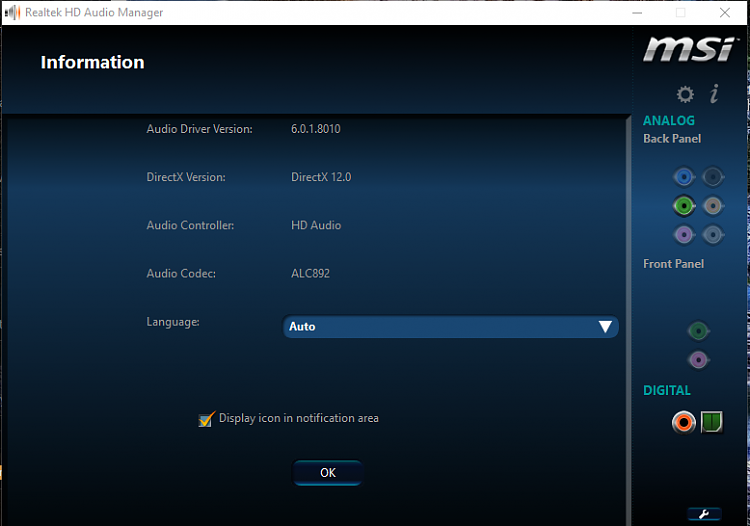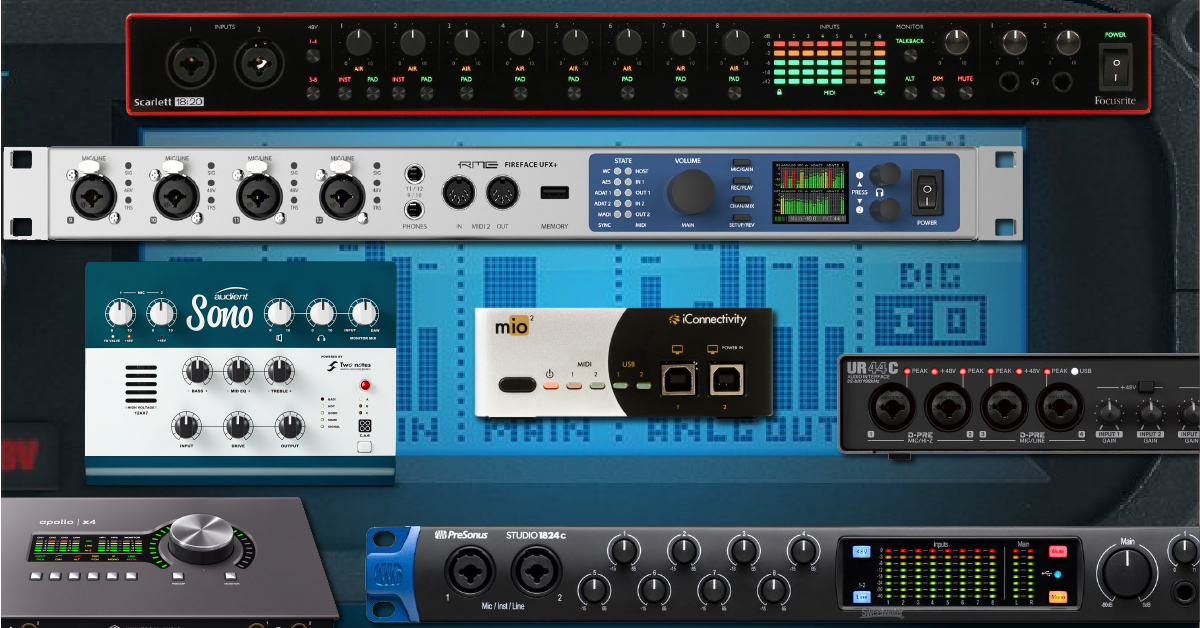- Digital Blue Sound Cards & Media Devices Driver Download
- Digital Blue Sound Cards & Media Devices Driver
- Digital Blue Sound Cards & Media Devices Driver Updater
- Digital Blue Sound Cards & Media Devices Driver Windows 7
- The BLU link card can send and receive 32 channels onto a BLU link bus. It interfaces with the dbx PMC16 Personal Monitor Controller, and BSS Soundweb devices which have BLU link ports. Part Number: Available from BSS Audio. Multi Digital Card. The Multi Digital card is a great tool to add recording functionality to the Si consoles.
- Bluesound: A Hi-fi, Wi-Fi Speaker System Shootout Sonos is the king of multiroom audio, but this Canadian upstart plans a coup.
If you’re looking to improve your audio or build a PC, you’re probably wondering if you need to buy a sound card. Fortunately for you, the age where this was a necessary buy for a PC is long gone, but there are still some situations where you may want to consider buying one. Let’s go over them quickly.
The Ins and Outs of PC Audio Jack Colors In many cards, the microphone connector will be pink, the line out or headphone will be lime green, and the stereo line in will be light blue. Additional jacks may be present on newer soundcards for rear and mid surround speakers. There is a widely accepted color standard for computer sound card input. A sound card is a component that translates digital signals to an analog one PCI soundcards are a dying breed, but they have their uses. In short, a sound card is an optional component that converts the digital signal your computer outputs for sound, and translates it into an analog signal for your headphones or speakers.
A sound card is a component that translates digital signals to an analog one
PCI soundcards are a dying breed, but they have their uses.
In short, a sound card is an optional component that converts the digital signal your computer outputs for sound, and translates it into an analog signal for your headphones or speakers. While you might be saying to yourself: “Hey, that’s just like a DAC,” you’d be right. These components are both designed to take the job of parsing signals into sound away from the computer.
But where a sound card differs is that it is almost always installed inside the computer case itself, not an external component. It’s usually connected to the motherboard via a PCI or PCIe card slot.
The black rectangular sockets shown here are the PCI (long) and PCIe (short).
By using these connections, the card can supply ample power to your speakers, surround sound system, or headphones—provided they don’t have special power requirements, that is. Additionally, it won’t take extra wires to link everything up to the motherboard: you can just drop the card in the slot, and screw the backplate into place.
Pretty simple, right?
When should you buy a sound card?
In general, most computers will handle the sound card’s job with an integrated circuit on the motherboard. Laptops especially will rarely use a separate sound card, as space is at a premium in today’s thin notebooks.
When your computer's audio is noticeably worse than your phone's, you want to get a soundcard.
But sometimes your desktop PC will provide crackly sound or have difficulty supporting the standards you want with your music. When your computer’s audio is noticeably worse than, say, your phone’s—you want to get a soundcard. Almost nobody will need to, but there are still certain circumstances where you’ll want one.
When your music sounds bad
Crappy PC audio is almost universally caused by noise created by other components, and a lack of shielding around the motherboard. A sound card sidesteps this issue by giving its internal components shielding and distance away from the noisiest parts of your PC. Even a crappy sound card will usually offer a slight improvement over your motherboard’s noisy circuitry if and only if you can audibly hear an issue with the stock setup. Nine times out of ten, though, a soundcard isn’t something you need to buy for better audio.
When your music isn’t supported
Some ultra-cheap computers will simply not have any audio output at all. While it’s excessively rare nowadays, every so often there’s no way to listen to your music with a computer, or you’re limited to crappy Bluetooth. In this instance, you’ll want either a sound card, or an external DAC and amplifier.

Getting a soundcard that supports your sample rate can ensure you don’t run into high-frequency errors in your music.
If you’re a collector or FLAC or lossless audio files, even some high-end motherboard-based audio chips won’t support playback at your collection’s native sample rate or bit depth. In that case, you’ll want a sound card to get your audio at the quality it’s supposed to be at.
When you need more ports than your computer provides
Those of you with sick desktop setups with studio monitors, microphones, and headphones might need more inputs and outputs than their PC currently provides. In this case, sound cards will often allow you to add optical out, surround sound out, and more.
What the heck do those colors mean? Check out the table below.
If you’re a music producer—or are looking into recording with your computer—a sound card is probably the best way to go when you consider that many of the components you’ll be using need certain inputs and outputs that only a sound card provides. In this case, we recommend getting a high-end sound card or interface to meet your rack’s needs.
What do all those ports on the back do?
| Color | Shape | |
|---|---|---|
| Optical | Black | Square |
| Headphone/line out | Green | Round |
| Microphone in | Pink | Round |
| Line in | Blue | Round |
| Digital out | Yellow/White | Round |
| Subwoofer out | Orange | Round |
| Rear surround sound | Black | Round |
| Center channel | Gray | Round |
| MIDI | Gold | Rounded trapezoid |
| Firewire | No color/metal | Rectangle with rounded side |
Taking a peek at the back of your soundcard can be a bit intimidating, especially if you’re trying to figure out where to plug in all those blasted wires. Luckily, they’re all color-coded to avoid obvious problems.
You will likely not need to use all of these ports, they’re there to meet the most demanding users. In all likelihood, you’re going to use the 3.5mm ports and little else.
When should you buy an external DAC and amplifier?
If you have a laptop or a compact computer unit, adding a PCI or PCIe-based sound card just isn’t in the… cards.
In that case, you’ll want to pick up something called a DAC (or DAC and amplifier) to stand in for the sound card outside of the computer. These will often connect to computers or phones via a USB cable (and before you ask: no, the cables don’t matter). The DAC and amp unit will perform the same functions as a soundcard, just outside of the computer.
Before you leave the store, be sure to check to see if the DAC has a volume knob or buttons. You may also need to pick up an amplifier if the DAC unit doesn’t provide enough output for your speakers or headphones.
Soundcard and audio interface are terms that can be used interchangeably. They do the same thing.

You may also like
Sony WH-1000XM4 vs Sony WH-1000XM3

Sony WH-1000XM4 vs Sennheiser PXC 550-II

How to fix problems with AirPods
Digital Blue Sound Cards & Media Devices Driver Download
How to fix problems with Bose QuietComfort 35 II
Digital Blue Sound Cards & Media Devices Driver
Headphone buying guide
Best music streaming services
By adding option cards to the Si range of digital consoles, you can interface your desk with a multitude of analogue and digital systems, whilst expanding I/O count beyond that of the standard console configuration.
Routing to and from the option cards is achieved via the 'Patching' functionality on the console. Further cards are always in development and will provide various solutions for interfacing onto emerging networks or devices.
The number of option cards that may be fitted varies by product model, as follows:
Digital Blue Sound Cards & Media Devices Driver Updater
| Soundcraft Si Compact | 1 card |
| Soundcraft Si Expression | 1 cards |
| Soundcraft Si Performer | 2 cards |
| Soundcraft Si1 | 1 card |
| Soundcraft Si1+ | 4 cards |
| Soundcraft Si2, Si2+ | 4 cards |
| Soundcraft Si3, Si3+ | 4 cards |
Digital Blue Sound Cards & Media Devices Driver Windows 7
USB Interface Compatibility:
PC: Supports Windows 7, Windows 8 and Windows 10.
Mac: Supports Mac OS 10.7.x Lion through 10.11.x El Capitan
